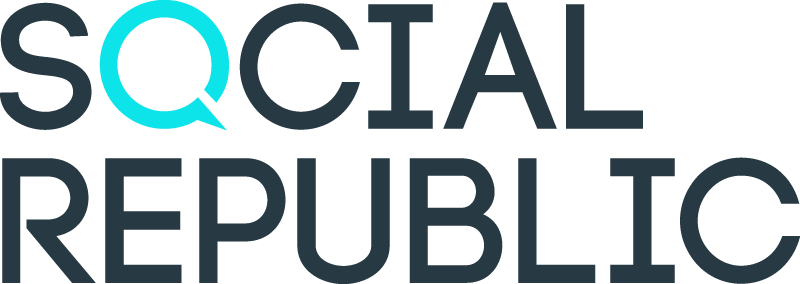As we mentioned in our previous blog post, key questions for charities when utilising social media marketing revolve around knowing which social media platforms are the most beneficial to them.
From raising awareness and increasing donations to running specific marketing campaigns and integrating digital on a long-term basis, social media provides many opportunities.
Two key questions you need to ask yourself are:
- Which platforms do your supporters use?
- What the purpose is of using the platforms?
When looking at the different platforms we will use these questions to help you understand what’s suitable for your charity.
To find out more about which platforms you should choose, read our advice outlined in this blog below:
One Size Doesn’t Fit All
Whilst we can suggest which platforms are the best, much of this depends on your charity and your specific goals.
For example, if your supporters are slightly older, then TikTok may not be the best platform as most users are aged between 10 and 24.
What works for one charity may not necessarily work for your organisation and that’s why following a set way of using social media platforms is not a suitable approach.
Keep Up With Conversations
An important aspect of social media is facilitating conversations among users to engage them with your charity. Audiences can be reached directly through instantaneous communication as dialogue has been extended through social media to be a two-way process.
Posting content is just one of the steps and further action must not be overlooked as simply putting social media posts out there will have minimal impact.
Social media platforms are beginning to incorporate new interactive features to assist in developing this ability and as we discuss each platform, we will explain ways in which conversations can be created depending on the features available.
Run Down Of The Main Platforms
An increasing number of social media platforms means that we can’t possibly cover every single one that’s out there.
However, for part one we will focus on Facebook, Twitter and Instagram and then look at Tik Tok and other platforms in part two (coming soon).
Ranking as the largest social media platform worldwide with 2.8 billion users, Facebook has recently experienced declines in users from younger demographics. However, use this to your advantage and instead focus on targeting the older generation.
The digital targeting method via social media proved particularly useful during lockdown when face-to-face fundraising was halted.
Now more than ever, the older population are using this platform and leveraging this will increase awareness and engagement with your charity.
If storytelling and sharing more information about your charity is one of the main purposes of engaging with social media, then Facebook is a great way to achieve this as the platform enables posts to incorporate images, text and videos which users can then comment on and share.
Main Features:
The private group and chat capabilities also enable the purpose of generating conversations and interest among social media users. Analytical tools can also be used to understand what content is the most effective.
Facebook is a great way for spreading information about charities through eWOM as social media users communicate between each other as well as with the actual charity organisation.
Additionally, Facebook is now linked to Instagram which means competitions and contacts can be synced across platforms.
Extending their features to direct donation buttons through their Charitable Giving and Fundraising Tools increases the ability to fundraise online through the platform.
Facebook is a powerful platform for telling stories about your charity and enabling conversations and sharing to be achieved. Ultimately, it’s a great way of spreading information about who and what your organisation does online.
With 192 million users and the main demographic being 35-65, Twitter is popular with a wide age range.
The platform is used to share information and news, with a focus on journalists, celebrities and opinion leaders. Hashtags also enable conversations to be created and added to by organisations across the world.
Whilst you can story tell about your charity, like on Facebook, there is a Tweet limit which means content must be concise and hashtags must be carefully chosen.
You can also use this platform for GIF’s, celebrating specific world days and if you run out of character count but have more to say, split the tweets up and create a thread (but don’t go overboard, keep it straightforward and easy for Twitter users to understand).
So, if your main purposes are to get involved in conversations and release news relating to your cause, then this is platform is perfect.
A bonus of utilising Twitter is that you can track what is being said about your organisation and the issues you aim to tackle such as poverty, which can be implemented by employing social listening.
Using this to your advantage to stay relevant and tailor future content can prove to be highly beneficial for your charity.
Main Features:
As we mentioned, hashtags are a large part of getting noticed on this platform, yet caution must be taken when crafting these as including too many or ones that are too vague takes away the value of the Tweets.
Quality over quantity is a useful phrase to remember when using hashtags on Twitter.
You can also pin Tweets to the top of your page which could be a link to donate, making it quicker and easier for users to know how and where to donate to your cause.
Images are also an important part of increasing engagement on Twitter, even though the main purpose is often to inform, adding images can help complement this and add greater context for users.
Twitter is a great platform for charities, yet if misunderstood can be overlooked or result in PR disasters. Keep the above points in mind and give getting involved in conversations and even starting them a go.
Coming in as the second-largest platform behind Facebook, Instagram has taken the social media world by storm with people spending an average of 29 minutes a day scrolling on there.
Like Twitter, the largest age group is 25-34 so Millenials are the users to mostly aim your content at. Whilst this doesn’t mean you can’t also target younger and older audiences, take into account that this is a platform used by younger individuals than other social media sites such as Facebook.
This means it can be a useful way to get younger generations involved with charities as they might not otherwise.
Instagram competitions have proven to be a great way of increasing awareness and engagement and adding entering rules such as following, liking and commenting can help to spread the word of your charity running a giveaway or raffle for example.
However, make sure you are fully informed about the T&Cs as there are many guidelines to follow.
Compared to other social media platforms, Instagram is focused on images and videos (reels and IGTVs). This means that if you have lots of visual content to share with your followers, this is the place to share it.
You can showcase volunteers, donors, the cause itself, or anything you think will be exciting content for others to see. This platform is therefore useful if you want to share some storytelling about your charity in a visual way.
Main Features:
Conversations can also be created through Instagram by using the poll and question features on Stories. You really can be creative when interacting with your audience.
Cross-promotion with Facebook has never been easier since Instagram is part of a mutual ad platform. Adding to Stories and posting on the main grid can be shared across platforms easily if linked directly to Facebook, where it can automatically post on there too.
Influencer marketing is a large part of Instagram, however, for charities, this can be adapted to opinion leaders and celebrities who are heavily involved with charitable causes. Them showing support for your charity on their Instagram account can increase exposure extensively – especially if they have a large following.
Donation features are also available on Instagram, making it simple for followers to donate directly.
Changing the account to a business profile means you can then add donation buttons to your Stories and a link in your bio directly to the donation page on your website.
Get Started
Now you know the main three social media platforms and how they can be best used for your charity, why not give it a go?
An increasing number of charities have gone more digital than ever before, especially due to COVID-19, so utilising these low cost and highly engaging platforms is a no brainer.
Keep an eye out for part two where we will be covering other platforms including TikTok and explain the benefits they can have on your charity.
If your charity requires help with how to establish and grow your social media presence, then get in contact with us today.
Let us know if our advice has helped you and your charity in the comments on our post on Instagram, Facebook or LinkedIn.

